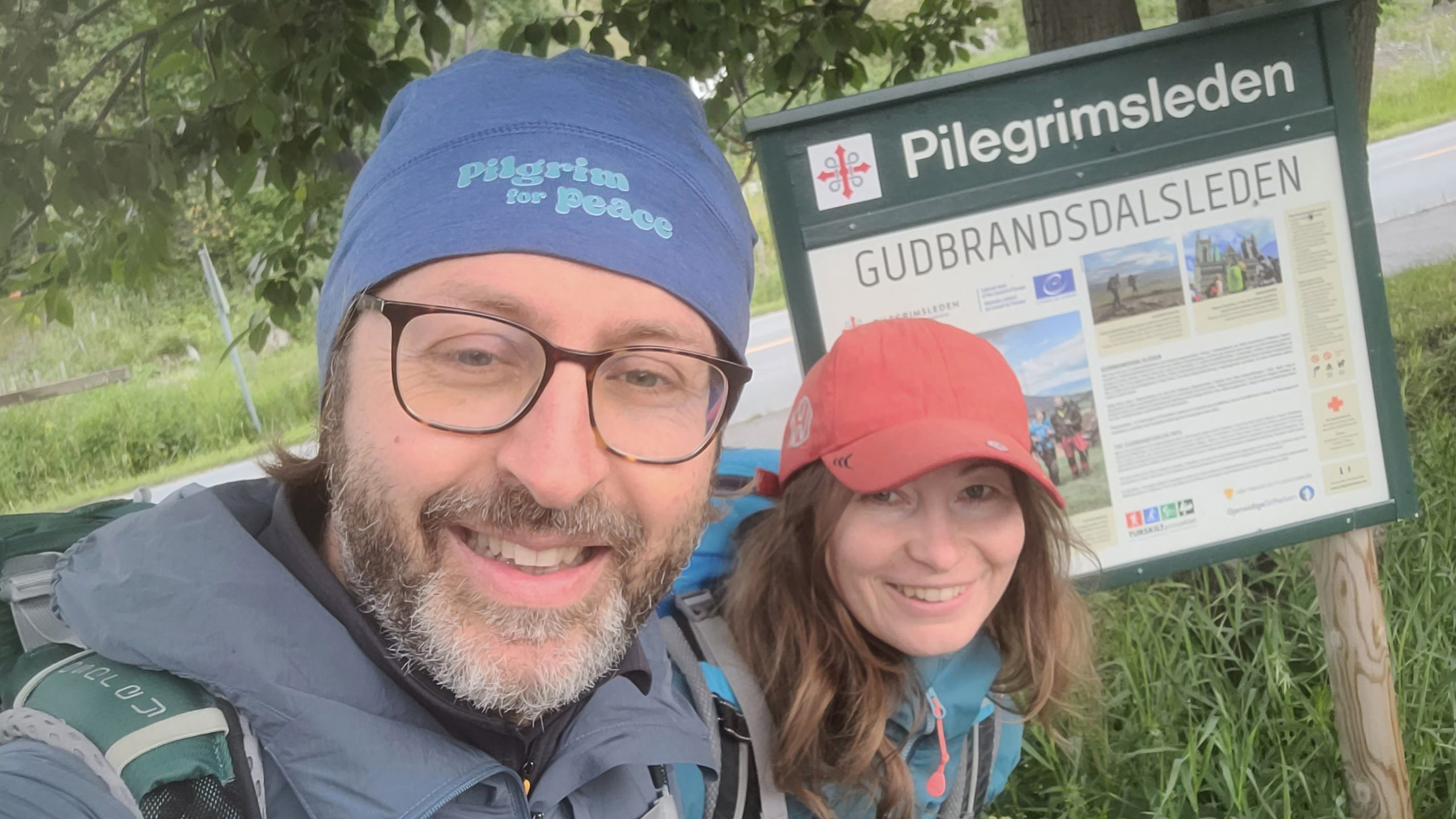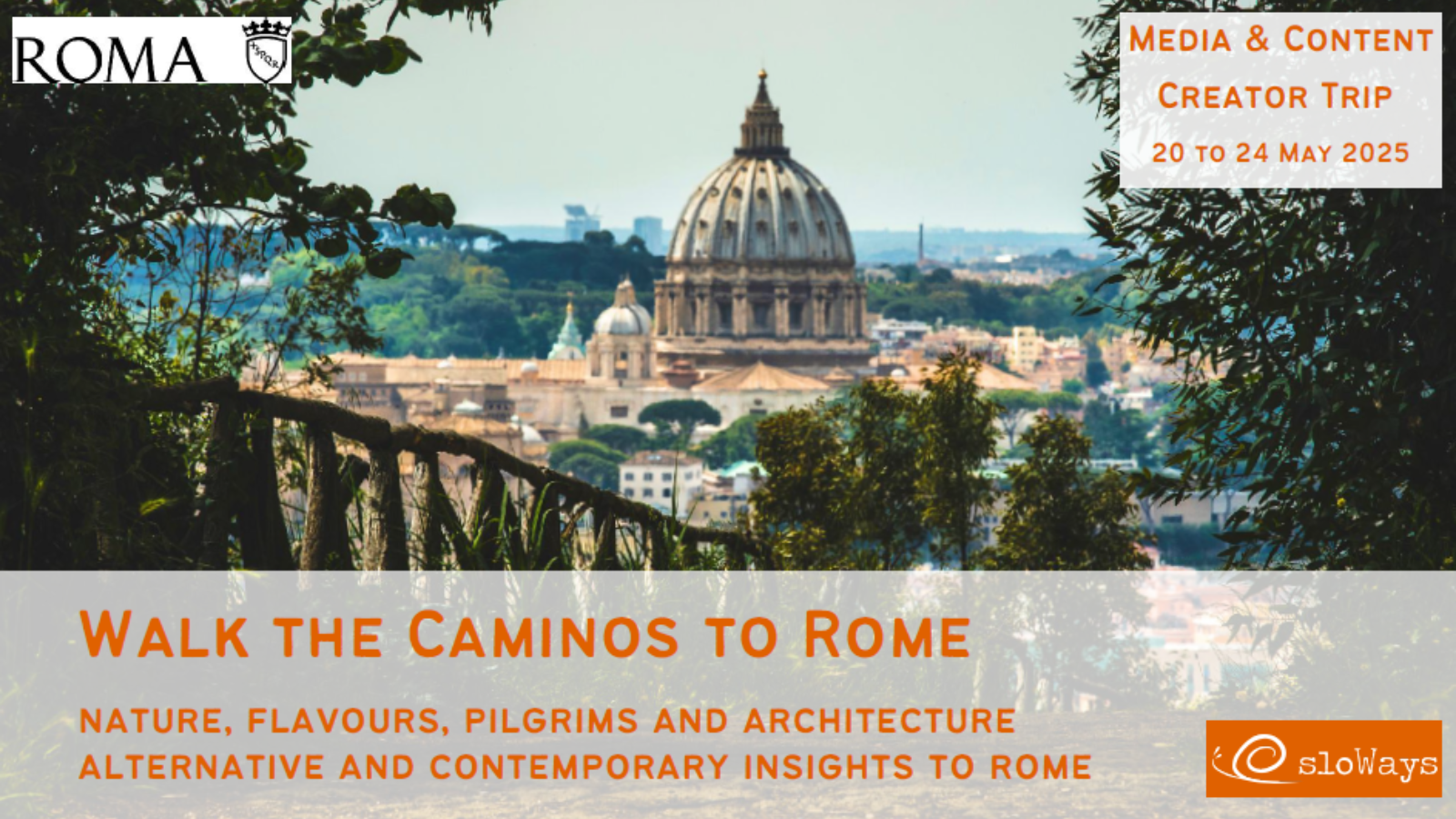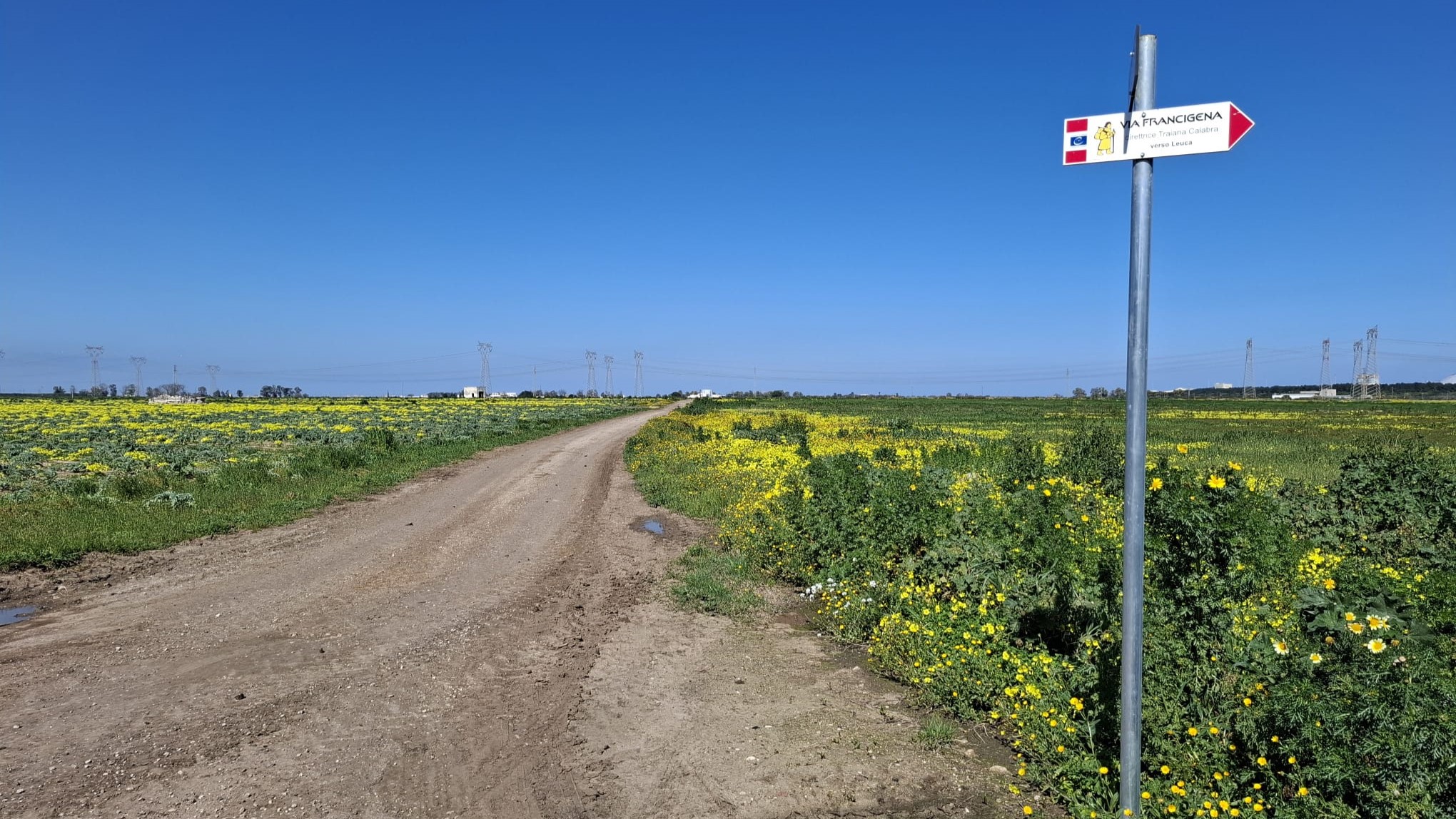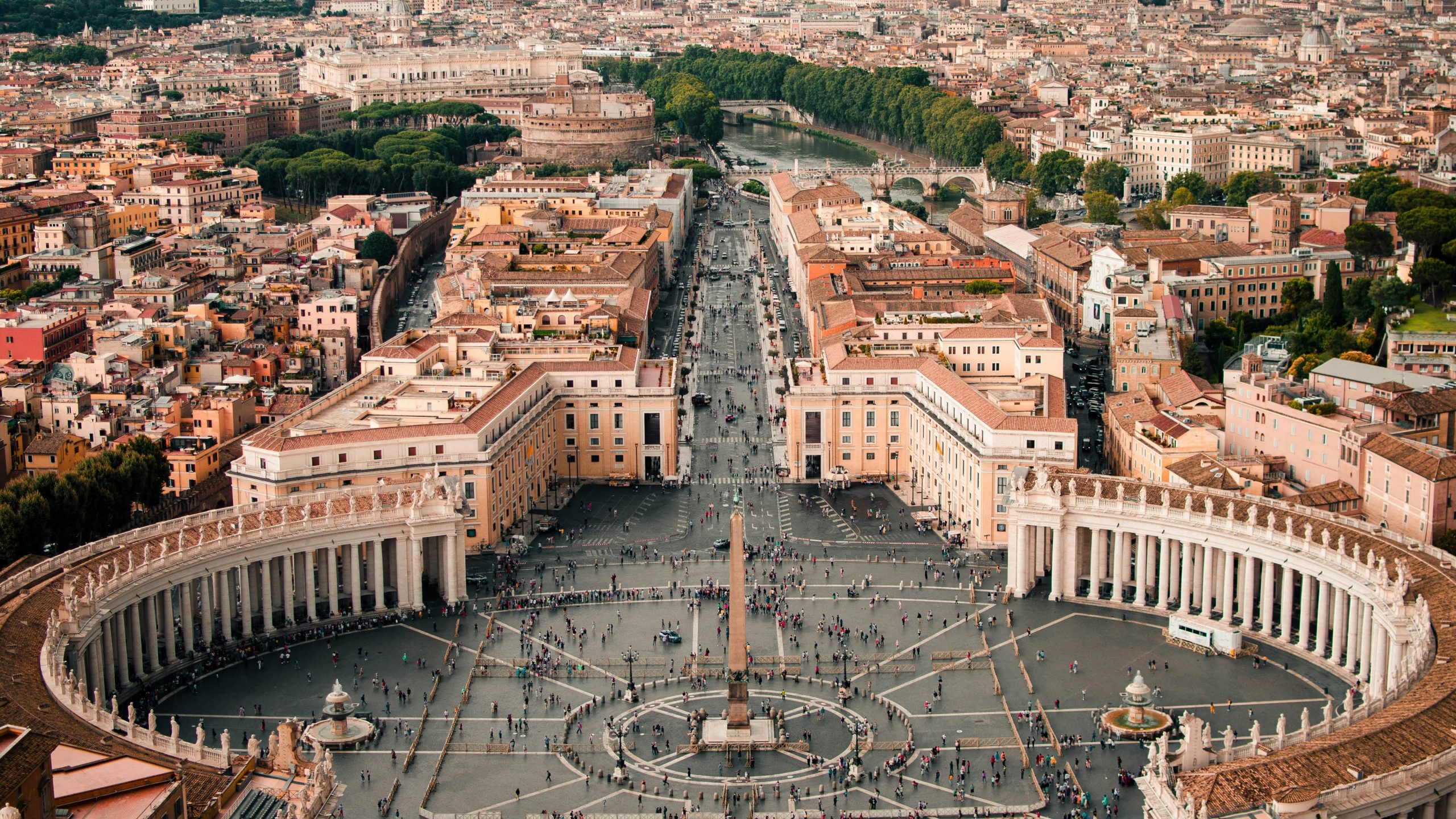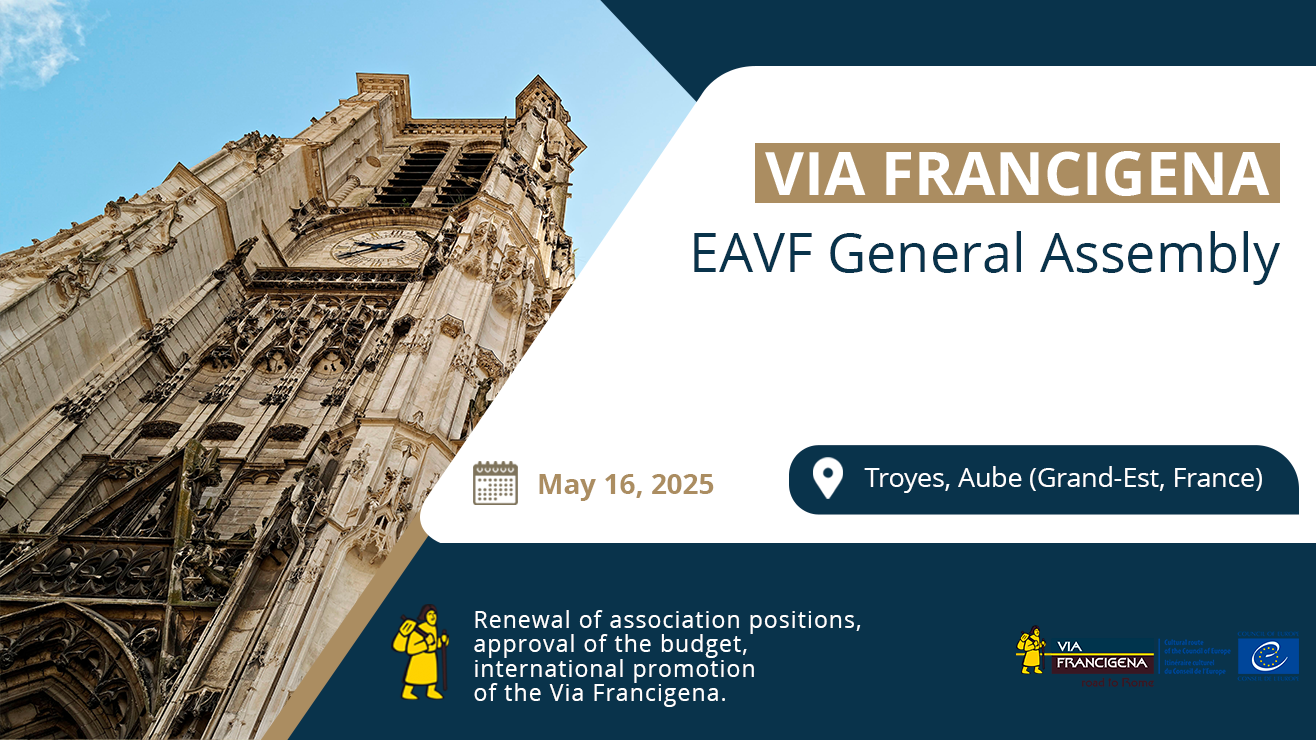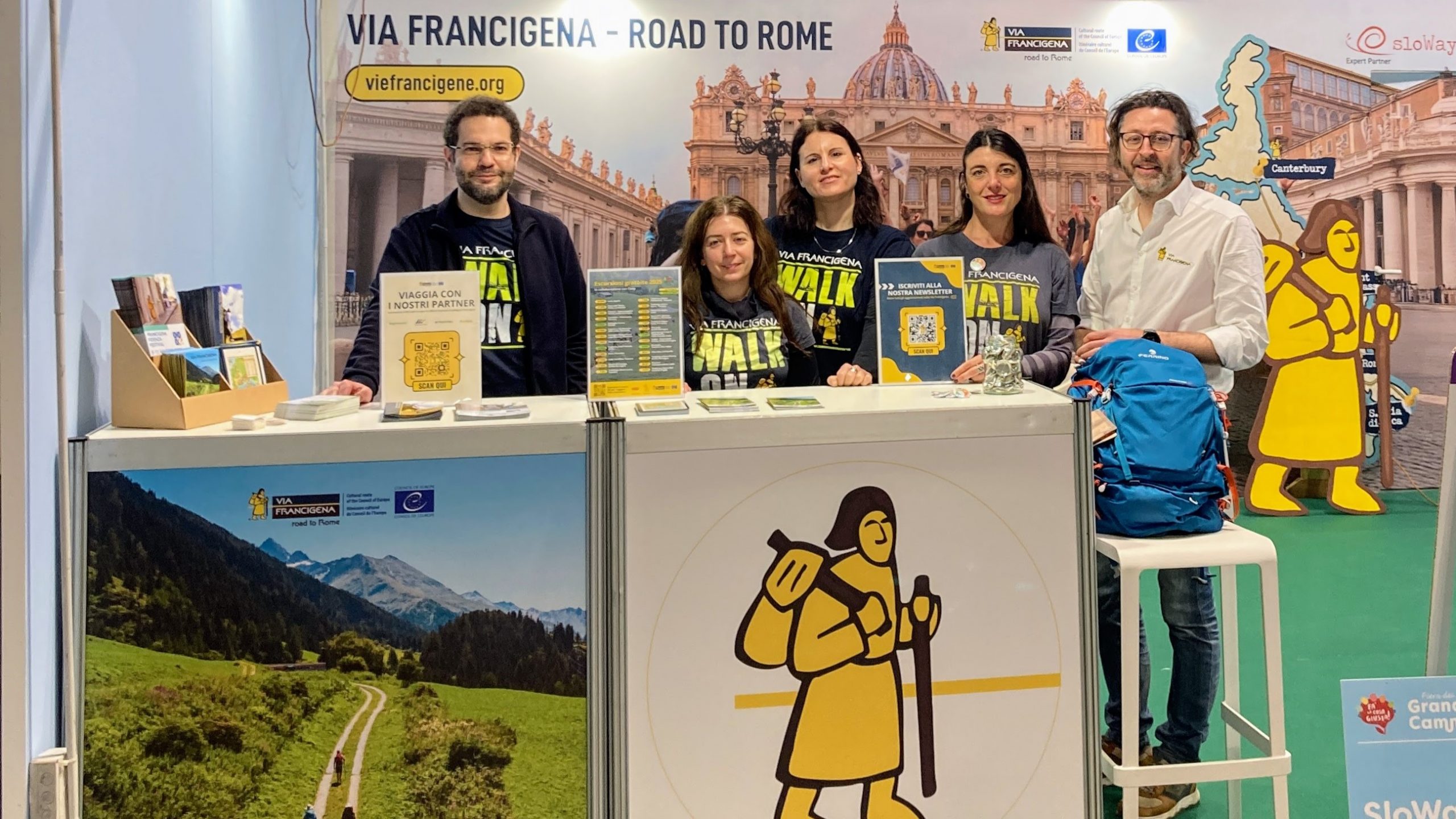Seven days of walking on the Norwegian paths of St. Olav, a beautiful Nordic route inaugurated in the late 1990s. A route that was recognised, like the Via Francigena, as a Cultural Route by the Council of Europe in 2010, this is authentic Norway to St Olav.
I came to Trondheim at the end of June on the occasion of the European Horizon 2020 project rurallure, a three-year project that enhances the main pilgrimage routes and their cultural heritage. It was therefore an opportunity to meet the Norwegian contact persons of the Association for the Route of St. Olav. Olav Way (ACSOW) who are in charge of the management and valorisation of the St. Olav Route, a path of great beauty that has many points in common with the Via Francigena: it is in fact a linear itinerary with homogeneous route indications and signposting, there is a final destination with an increasing number of walkers coming from all over the world, there is a pilgrim reception system, there is a network of municipalities involved along the itinerary, there is an active European organisation that, on a mandate from the Council of Europe, valorises and promotes the itinerary.
At the end of the conference, backpack on my shoulders and walking sticks, on 2 July I set off in the footsteps of King Olav together with Elena Dubinina, project manager of the European Association of Vie Francigene which is coordinating the ‘rurAllure’ project on behalf of AEVF. An opportunity, therefore, to learn directly in the field about the operation and management of the route, to verify its reception, signposting and to meet the local communities.
Before starting the authentic Norwegian route to St. Olav, we retrieved the credential, another element that the St. Olav route has in common with the Via Francigena. The pilgrim’s passport is an instrument that still has great symbolic value in every pilgrimage.
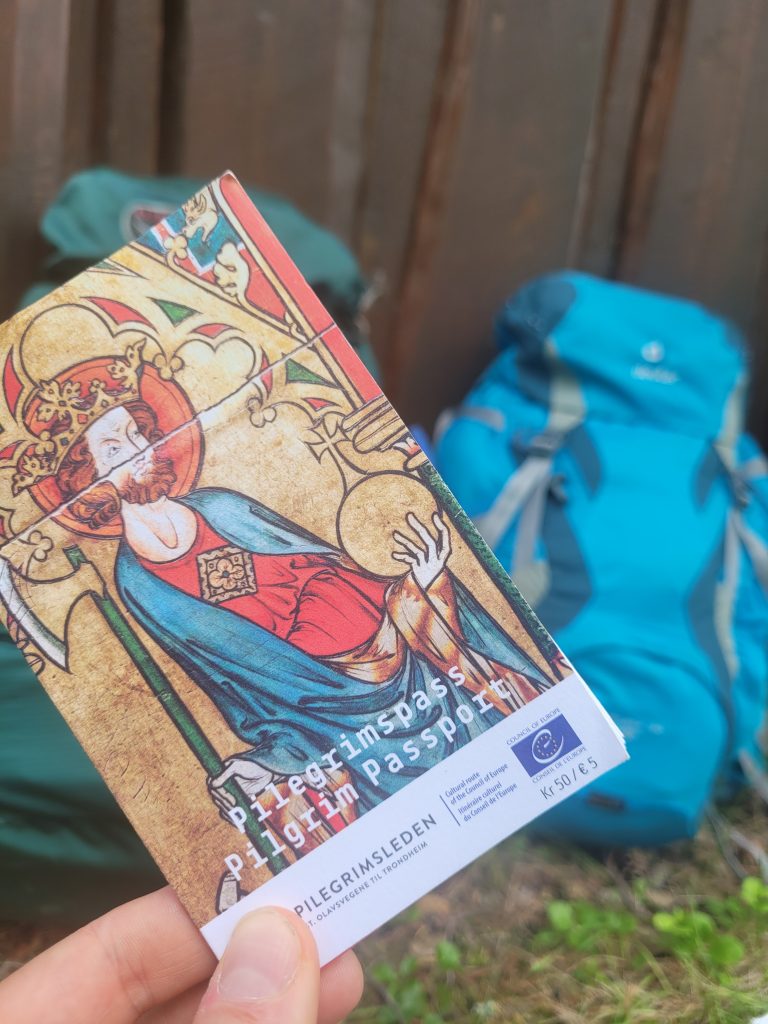

The stages of the journey from Oppdal to Trondheim
DEPARTURE WITH THE CREDENTIAL FROM OPPDAL
Here we are ready for the 170km long walk, starting in Oppdal, easily reached by train from Trondheim. We covered stages of 21 and 28 km, but often the numerous uphill and downhill slopes seemed to dilute the number of kilometres we covered. The first impact we had was with the weather: on the first day there was rain, wind, cold, sun and heat with us. All concentrated in just a few hours!
VILLAGES AND NATURE
The villages you pass through are often small clusters of houses or you encounter individual farms with grazing animals. It is nature in all its beauty that is the protagonist of the journey from the first kilometres. Stretches of plains and gentle hills alternate with lakes, but there are also numerous steep climbs and marshy places that test the pilgrims’ stamina. What is also striking are the scents that constantly accompany the pilgrims’ steps. We meet few pilgrims on foot, while there are many who overtake us on bicycles. However, you are never alone: you are in the company of birds of prey, sheep, horses, cows at many points along the way. There is no shortage of animals!
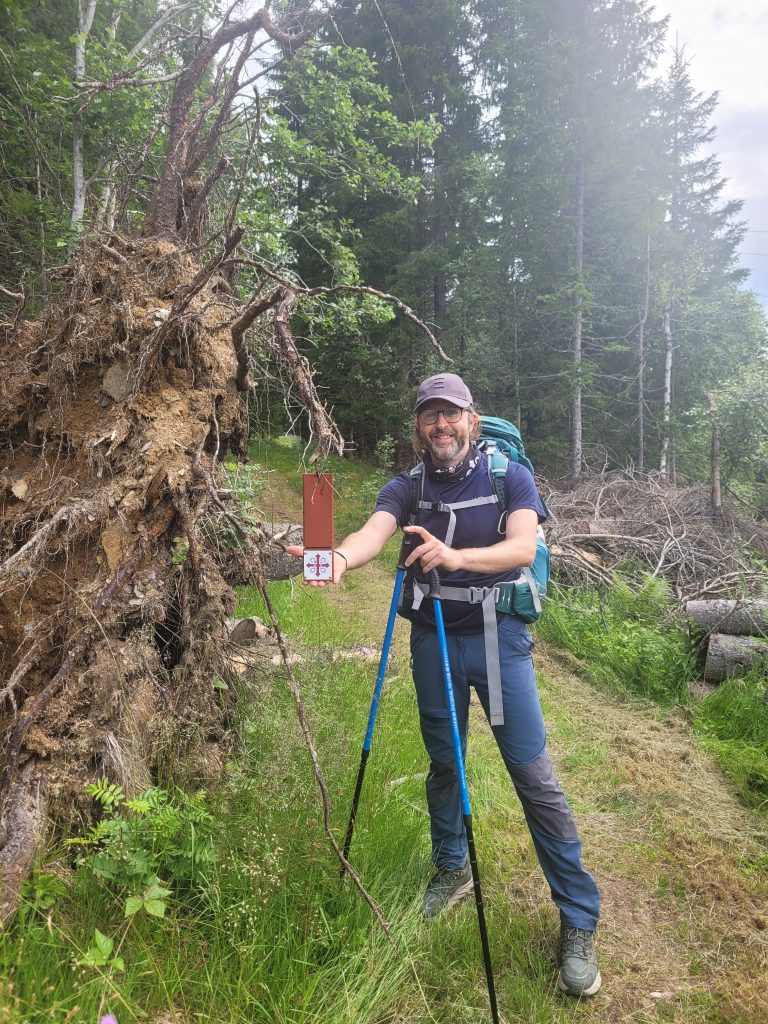

WELCOMING
The welcome at the stage points with the warmth of the host people is a highlight of the walk. We started with the Langklopp farm, which also houses a horse stable. The second day at the Meslo farm where the dinner prepared by the owner Inger is hard to forget. On the third night, we arrived at A (like the first letter of the alphabet, but with a dot on the ‘a’), in a small picturesque farmhouse with all wooden walls. Even the fireplace had to be lit, given the un-Mediterranean temperatures. Another nice memory. We continue to Lokken Vert, a place with an ancient mining history where there is a small hotel that accommodates pilgrims. Then it is the turn of Skaun, in the parish seat next to the beautiful, well-preserved Protestant church. Spartan but essential hospitality. On the sixth day, we are in the small town of Sundet, which is reached after ferrying the Gaula river by rowing boat with the ‘Charon’ John Wanvik, who transports the pilgrims from one bank to the other. Wayfarers can then stop to sleep in his beautiful farmhouse, which dates back to 1100.
THE ARRIVAL
The arrival and welcome in Trondheim has a special flavour: here is the beautiful Pilgrim Centre, one of twelve on the route. We are welcomed by Ingeborg Collin, director of the centre, and then by two kind volunteers who hand us the pilgrimage certificate, which we must keep carefully. Before arriving at the facility that accommodates pilgrims, we make our way to Trondheim Cathedral. The last few kilometres are also warmed by the sun, which makes this finale even more beautiful where we finally meet the stone indicating the zero kilometre of the route! The finish is always a moment that, at least personally, brings with it many emotions, shades of colour and contrasting vibrations. On the one hand there is a veil of sadness because the walk ends, on the other there is an immense joy linked to the experience just lived. The walk in its simplicity makes me truly happy.
The next morning, when I wake up, my body always has a few moments of strangeness because I had got used to the backpack. Instead, it is now time to let the backpack rest, ready to go. A beautiful journey.
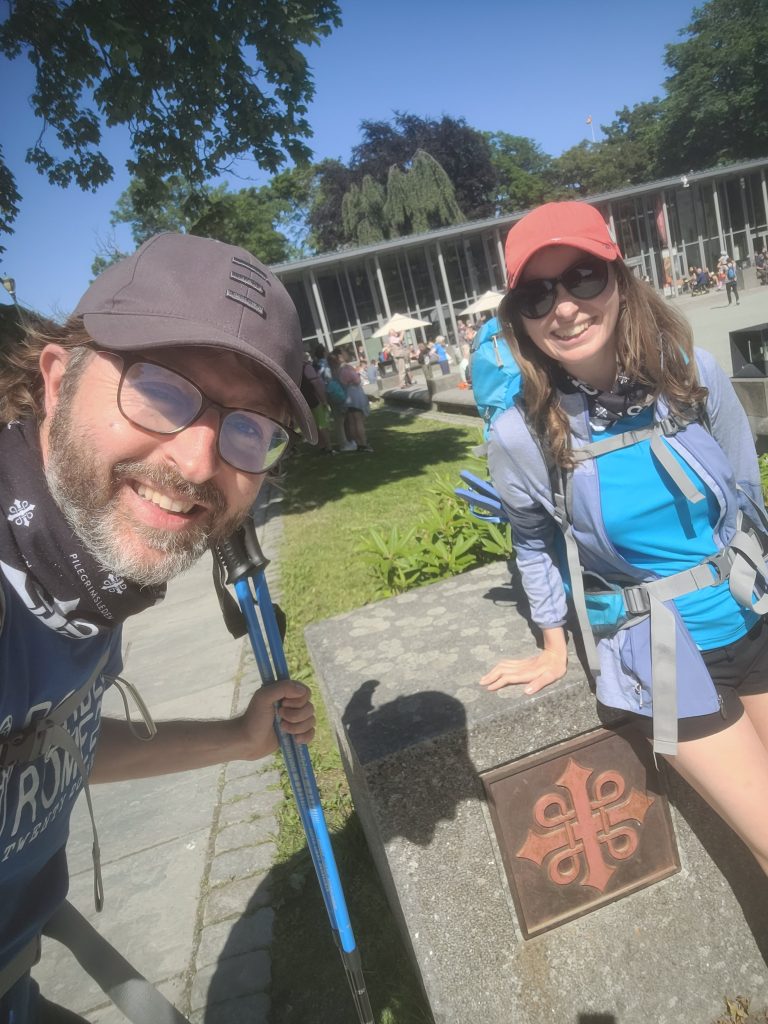
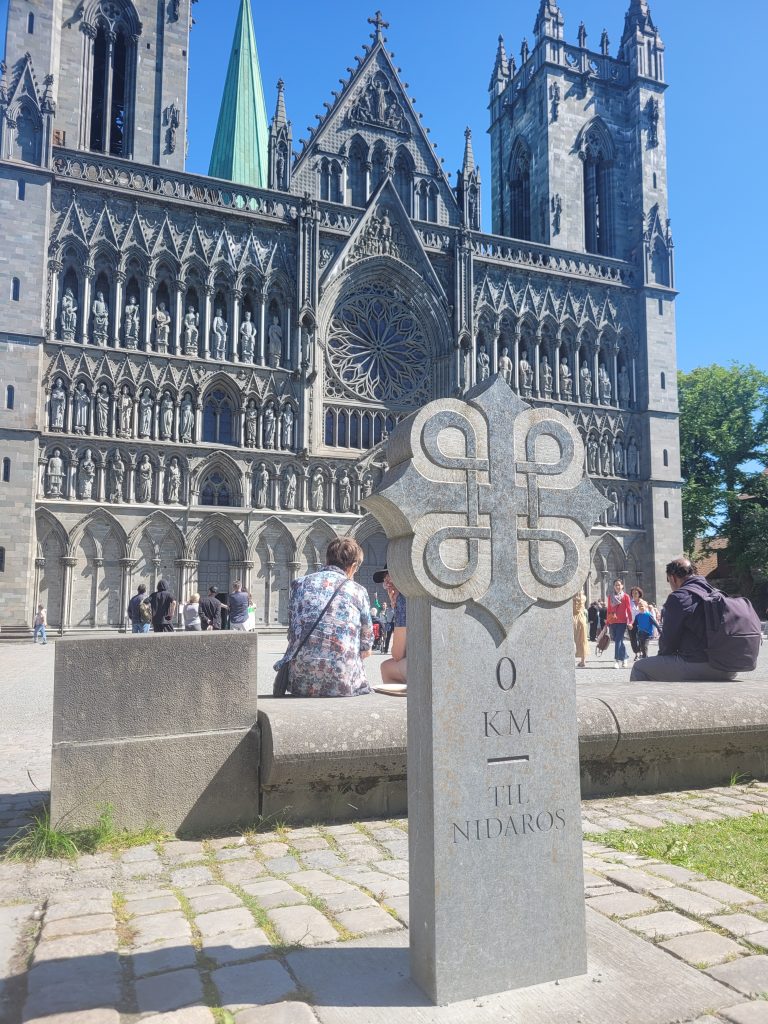
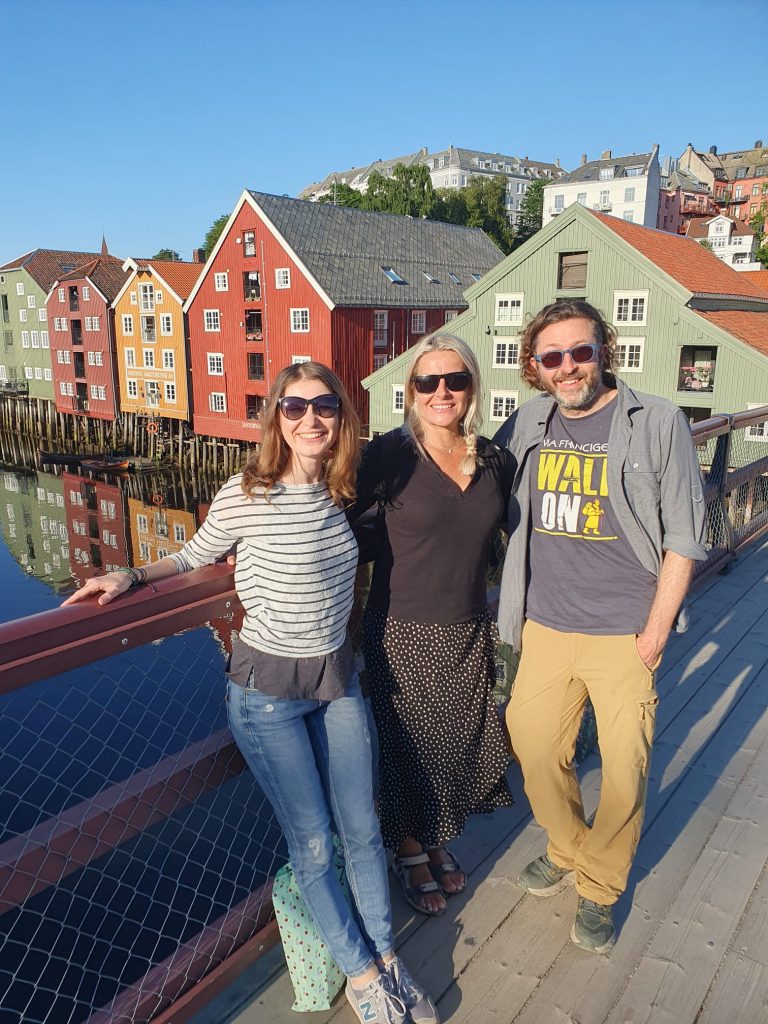
9 Tips for tackling the Saint Olav walk
A BIT OF HISTORY
Who was Olav Haraldson, who lived between 995 and 1030 and became a saint almost immediately after his death?
During his adventurous life, Olav was an important figure for Norway, considered a kind of national independence hero and founder of the kingdom. He imposed the Christian faith on the population in 1016 and fell in battles at Stiklestad. Soon afterwards, his fame grew exponentially due to the devotion shown to him by the faithful, which helped to promote his canonisation.
TRONDHEIM, THE DESTINATION
The majestic Gothic Nidaros Cathedral, or Nidaros Domkirke, was actually built from 1070 on the tomb of St Olav. It is now the end point, the zero kilometre of this beautiful European cultural itinerary.
Today, pilgrims can choose numerous alternatives among the many routes dedicated to St. Olav that cross Norway, although the main route is the one from Oslo to Trondheim for 650 km, to be covered in 28/30 stages. On the final stage in Trondheim, pilgrims receive their pilgrimage certificate.
WHAT DIFFICULTY DOES THE PATH PRESENT?
It is a path studded with natural beauty, forests, authentic landscapes, sometimes wild and unspoilt. But beware, it also requires commitment and effort as several stretches require a minimum of experience and training. One variable to be managed well is the weather, for which one must be prepared for rain, wind, cold, sun and heat. The suggestion is to have good technical equipment.
The ideal time to walk it is June, July and August, when, among other things, there is a burst of light that envelops travellers practically 24 hours a day.
GUIDES AND SIGNPOSTING
The walk is on the whole well signposted, although at some junctions the path can be lost. There is no official app, but you can follow the tracks on the site, which can also be used remotely.
However, it is possible to use the AllTrails App, which contains more than 100,000 hiking trails worldwide, and which offers a discount on the premium version at this time. The app, once the location is indicated, shows the ‘trails’, i.e. the routes in the area, which can be sorted by difficulty and other characteristics; it also allows you to register your own trail and receive targeted alerts. These features allow you to safely walk or cycle your route thanks to the GPS activity tracker. It should be noted that the premium version allows you to download the maps to consult them offline.
There are several guidebooks in circulation in different languages. For the Italian language, one was recently published by the Terre di Mezzo publishing house, by Roberto Montella. A guide that is at the same time also a story, very engaging.
ACCOMMODATION
You sleep in very different facilities: from Pilgrims Centres (there are 12 along the main route), to farms run by private families, religious facilities, hotels and B&Bs. Prices vary widely, on average from 15 euro for spartan facilities to 35 euro for those with more facilities. It is often possible to take a complete package with breakfast, dinner and box lunch for the next day at a price ranging from 50 to 90 euro per day. It is however possible to cook for yourself in many accommodations.
The tent? Many people use this means to sleep outside at night. You can camp in the middle of nature, pitching your tent wherever you want. There are also numerous Gapahukers (open shelters and canopies) along the route where one can stop for food, rest and sleep.
EQUIPMENT
I suggest a rucksack of 40-50 litres, also because the temperatures oblige you to equip yourself well. What to put in your rucksack: Apart from all the traditional clothing that you can take along the Via Francigena, in addition to the essential first-aid medical kit, a windproof jacket (also consider cold temperatures) and a good mackintosh that is guaranteed to last at least 4-5 hours in the rain should not be missing. Better also gaiters to cover your ankles when it rains. Definitely Gorotex waterproof shoes, high or medium, but even low ones are fine in my opinion. A pair of waterproof trousers are certainly useful. Finally, don’t forget trekking poles.
CUISINE
On this trip, you also come into close contact with the local cuisine.
Norwegian specialities range from game to cheese to fish, all to be accompanied by local craft beers.
LOCAL COMMUNITIES
Local communities, often gathered in small villages between valleys and mountains, begin to welcome with enthusiasm the arrival of travellers from all over the world. The inhabitants are also the first people to be asked to fill their water bottles with water if the need arises.
It was especially nice to stop and talk to the inhabitants or the owners of the facilities.
For more information on the route, you can go to the website of the Association for the Route of St. Olav Way (ACSOW)
https://www.acsow.org/en/frontpage/
Author: Luca Bruschi, EAVF Director



